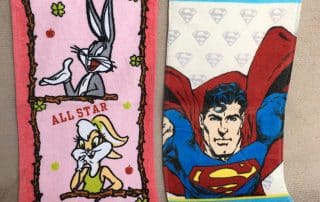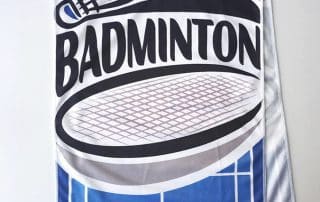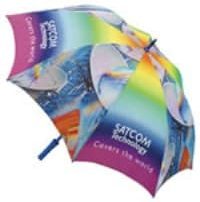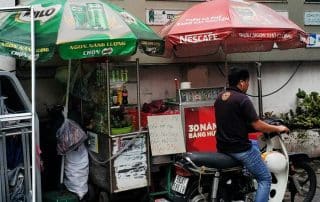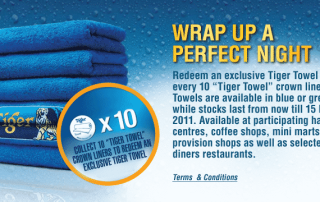Custom printed towels are definitely one of the most inexpensive promotional products out there. Printed towels can be used in a variety of ways, including as giveaways at events, for corporate gifts and for promotional purposes.
But with so many different printing methods available, how do you know which one is best for your needs? Scroll down to learn more about them!

As a towel is one of the most frequently used items in the household, it is important to get a good quality towel that will last. Customised towels can be an excellent choice as they not only look good but are also durable and easy to use.
Here are some of the popular printing methods used for customising towels and their potential issues:
1. Silk Screen Printing
Screen printing is the most common and widely used method for towel printing. It is also the most cost-effective.
Screen printing uses a mesh screen which is stretched tightly over a frame to create an open area where ink is deposited onto a substrate such as fabric or paper.
Ink is applied to the mesh screen in varying thicknesses to create different effects in the design of your towel.
The ink then passes through the mesh onto your towel when pressure is applied to it from behind.
2. Reactive Printing Method
Reactive printing is the most advanced method of fabric printing.
This method permanently locks the colours of the design into the textile without affecting the quality of the cotton.
After the application of reactive print paste to fabric, the colour creates a bond with the cellulosic fibre and helps to resist washing and friction, and also creates the fastness properties.
It is called “reactive” printing because the ink reacts with the substrate when heated or steamed.
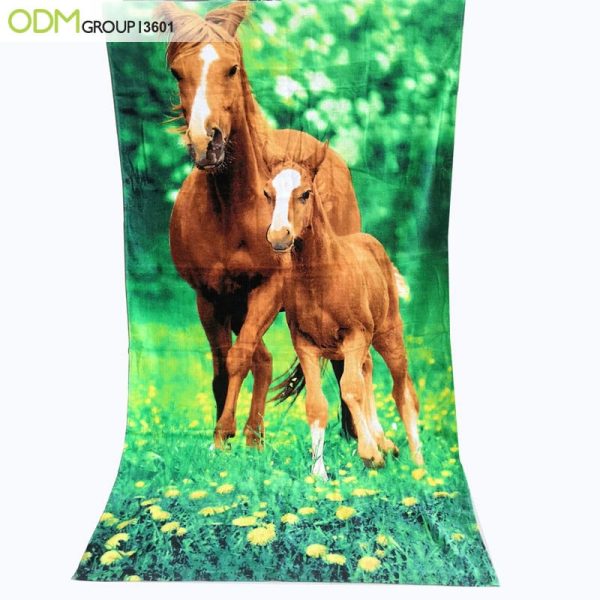
Materials for Reactive Printing
Reactive dyes for cellulosic materials were created in 1954, and ICI in England launched the first variety of reactive dyes popularly known as Procion dye in 1956.
But through the years, the chemicals being used have changed to these:
- Sodium Hexa meta-phosphate
- Sodium alginate
- Urea
- Sodium bicarbonate
- Resist salted
- Caltex police
- Kollasol CDA
- Kerpshin emulsion
- Water
The Reactive Printing Process
Here’s a quick rundown on the steps to be followed for reactive printing:
- Pre-treatment. First, wash the fabric and then dry it. Prepare the reactive dyes and they will be mixed with steam to print into the threads of fabrics. These reactive dyes are printed over the pre-treated textile by using an inkjet.
- Printing (Print Paste). Prepare the stock thickener and print paste. Sodium alginate thickener is used in stock thickener. So, it will result in good colour, vibrant levelness, and edge sharpness.
- Steaming. To set the reactive dyes into the fabric, it has to be heated through steaming. Then, these elements such as the dye, pre-treatment, and the steaming procedure induce a chemical reaction that sets a covalent bond, saturating colours into the fibres.
- Extraction. Finally, the fabric will be washed to extract the excess dye and pre-treatment to achieve a bright and permanent print.
Achieve bright, good colours using reactive dyes. You can transform beach towels into powerful canvasses to promote your brand at the beach, gym, and even at work.


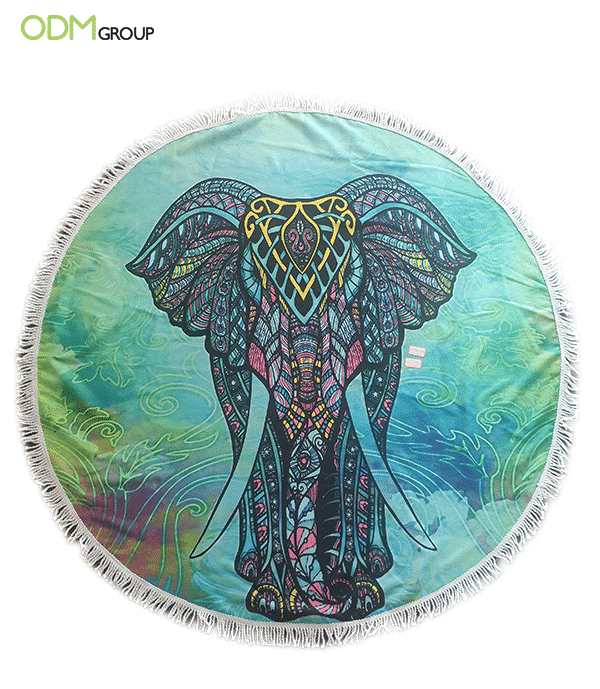
Towel made of microfiber, used for the beach – thicker material.
3. Heat Transfer Method
Heat transfer printing involves transferring a design onto a towel using heat-sensitive inks.
This process is similar to ironing on a patch or a label, but the ink is absorbed into the fibres of the fabric instead of being applied as a coating.
On top of that, it allows you to print full colour images on your towels without any outline lines or seams.
The result is an image that will not scratch off or fade over time.
Materials for Heat Transfer Printing
Heat transfer printing on fabric can substitute or supplement alternative methods of printing. Here’s what you need to pull off a successful heat transfer to apply a logo on your desired product via heat transfer printing:
1. A computer
2. Heat transfer method
3. Heat transfer ink
4. Heat transfer paper
5. Cutter
6. Heat press
7. Heat pads
8. Heat tape
9. Heat resistant sheeting
10. Substrates
What are the Potential Issues?
Printing on both sides of the towel.
- Print logo on the other side in water wash label (only 1 side will have full-colour print)
- If printed on 500gsm, too thick to print
- If printed on 300gsm or 250gsm, too thin to print – may affect the quality of printing
- Can source for suppliers that can do both sides printing on 300gsm but the MOQ will be 1k pcs. However, this one can be seen thru which makes it very thin
Take a look at the examples below: Towels made from cotton with a velvet finish, 300gsm – better use for bath and shower.
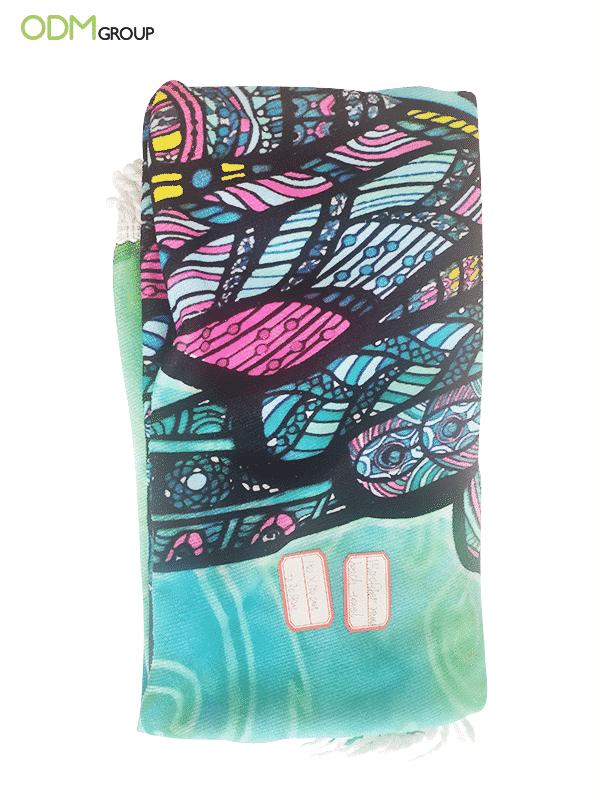
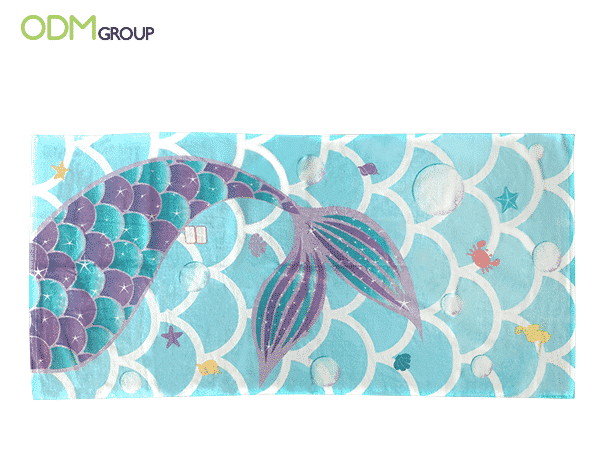
4. Digital Printing Method
Digital printing is also used to create custom towels and other items such as promotional shirts, hats and bags.
The process uses ink-jet printers to print onto the fabric, which creates a softer look than screen printing.
It's also easier on the environment because it doesn't use any chemicals or solvents during its production.
This printing method enables you to print large amounts at once without changing screens.
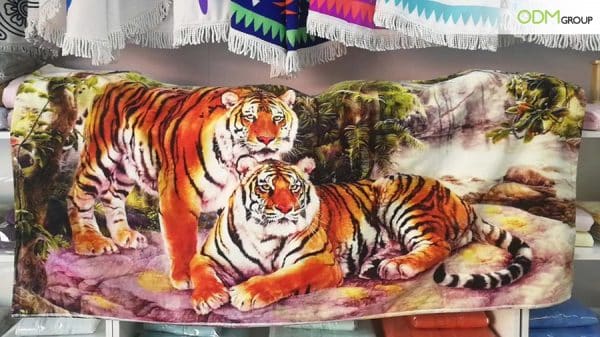
5. Embroidery
Embroidery refers to various types of needlework that are traditionally used to embellish fabrics such as clothes or towels by stitching yarns through them using a sewing machine or hand sewing techniques.
As far as custom logo towels go, this type of decoration involves attaching small pieces of thread to specific points on an item using a needle and threading them through certain holes on the fabric with a double-sided tape backing underneath so they don't fall off easily when washed in washing machines repeatedly over time.
This method can be used to create detailed images and text that are impossible to achieve with other methods of printing.
Why Custom Printed Towels?
1. Hypoallergenic Towels
The quality of the towel you’re choosing is an essential thing to consider. This custom design beach towel is made of Turkish cotton, which is super soft, durable, and highly absorbent. Its hypoallergenic feature gently touches and perfectly protects sensitive skin.
In other words, this is a great summer promotional product or a gym membership gift for health buffs.
2. Builds a Strong Consumer-Brand Relationship
If you want your customer to feel the extra care, then a customized towel is an inexpensive way to show it. As a promotional gift, they go well with personal care and beauty products. Even beer brands and the healthcare industry can benefit from advertising their brands on custom printed towels.
3. Budget-Friendly
Great quality but very affordable! You can still provide your customers with an inexpensive yet high-quality and practical gift that they can use every day.
4. Infinite Promotional Marketing Uses
We can say that a promotional tool is great when it has many uses. The best thing about these reactive printed towels is that you can use this marketing tool as a promotional gift, freebies, or gift with purchase. They can be used to market drinks, gym memberships, Spas, hotels, hospitals, schools, sports teams, and many more!
5. Makes Marketing Even More Extra-Special
Customers would certainly like a different atmosphere, make your marketing more fun and more colourful through these reactive printed towels. It is available in different combined colours, designs, and styles which perfectly add a cheerful mood to your customers.
We have previously posted about the problems encountered when printing bar towels. In this blog, we enumerated the common printing mistakes and ways to counter them.
To Sum it Up,
Branded towels offer lots of branding opportunities for different brands and different industries. One thing to remember though, the effectiveness and longevity of your promotional towels also depend on the quality of the prints.
You want them to look more like a gift so customers will be delighted with them. As such, you should pay attention to what kind of printing and the decorative method you should be using for your custom printed towels.
So, would you be interested in customizing beach and gym towels for your promotions? Then contact us with product code: ODM-3601.
How Can ODM Help?
We understand that it can be challenging to find the perfect promotional product and customisation method that will make your brand stand out. So here at ODM, we’re working hard to make sure you get the best, exceptional branded merchandise that will put your business at the top of your target audiences' minds.
Together with our POS design agency, Mindsparkz, we ensure that we are always ahead of the game to guarantee that you will get new and innovative products for your marketing campaigns and promotions.
Contact us today to get started on developing a product that will go above and beyond your expectations!












